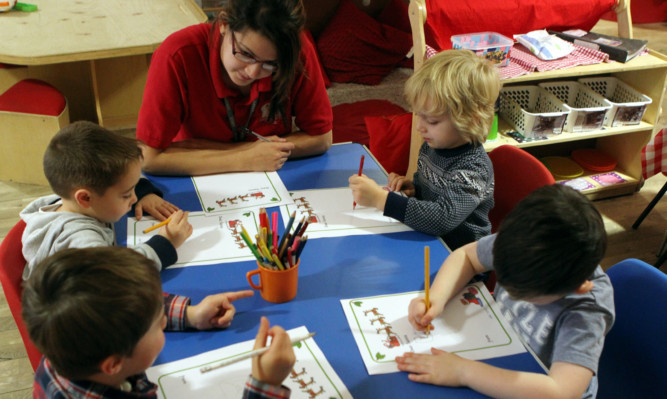The number of registered teachers working in nurseries and pre-school settings has fallen by almost a third over the past decade, according to a new report.
The trend contrasts with a 4% fall in child numbers and comes as the Scottish Government places more emphasis on early learning and childcare.
The research, conducted by the child’s curriculum group for the Educational Institute of Scotland (EIS) teaching union, found a 29% reduction in General Teaching Council for Scotland-registered teachers employed in such services, down from 1,702 in 2005 to 1,212 in 2014.
Child numbers fell from 105,810 in 2005 to 101,463 in 2014.
This translates as a ratio of one teacher to 84 children, compared with a ratio of 1 to 62 a decade ago.
The government has pledged to increase free childcare and early-learning hours for three and four-year-olds to 1,140 hours per year by 2020.
EIS education committee convener Susan Quinn said: “This new independent report confirms the importance of maintaining a registered teacher workforce in all pre-school settings.
“It highlights the added value that specialist early-years teachers provide in nursery establishments while also questioning the varying commitment by councils across Scotland to the deployment of teachers in nurseries.
“The report also highlights the ambiguous interpretations of ‘teacher presence’ and ‘access to a teacher’, which is particularly important in light of the planned expansion of the early learning and childcare entitlement to 1,140 hours by 2020.”
She added: “Scotland’s Curriculum for Excellence offers an enhanced learning experience for young people of all ages, supported by a seamless curricular model from age three to age 18.
“This means that it is even more important for an appropriate level of teacher involvement in all nursery settings.”
Conservative MSP Liz Smith said: “The First Minister made a very firm commitment when she said that her top priority was to close the attainment gap and that the most effective work has to be done in the earliest years.
“A significant decrease in nursery teacher numbers will surely make this commitment impossible.”
